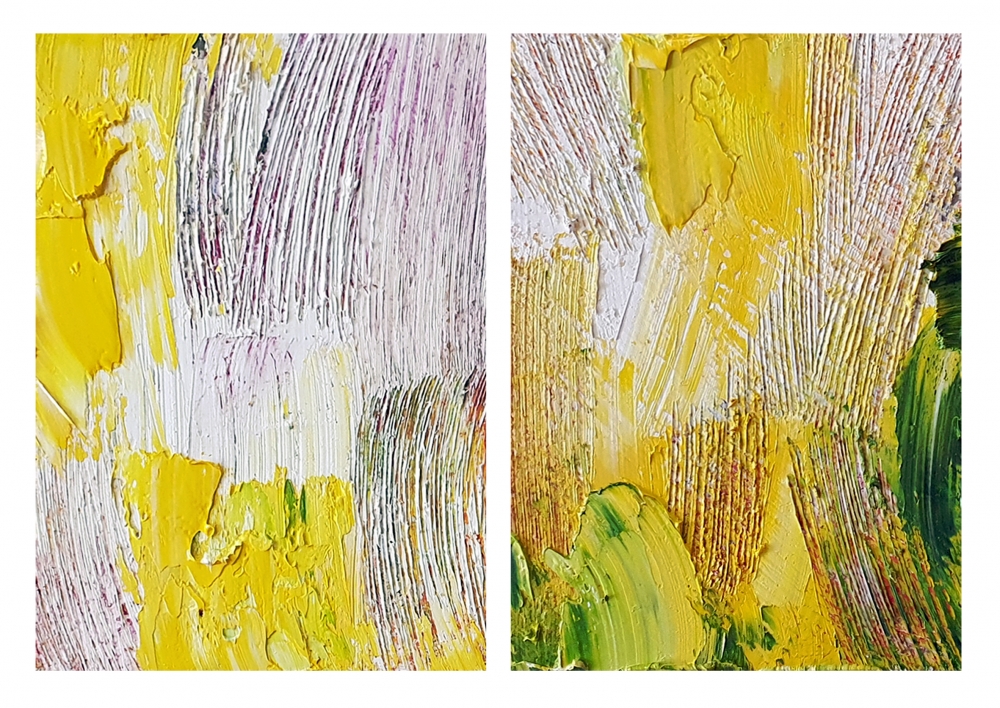사진가상적 흔적이 끼워지는 순간 20-19 The moment the virtual trace is inserted 20-19
 가상적 흔적이 끼워지는 순간 20-19 The moment the virtual trace is inserted 20-19 캔버스, 유화 | 각 33.4×27cm | 2020
가상적 흔적이 끼워지는 순간 20-19 The moment the virtual trace is inserted 20-19 캔버스, 유화 | 각 33.4×27cm | 2020
- 등록번호 : 2044
- 자료생성일 : 2020-04-22
- 분류 : 전시
-
요약설명 :
백요섭 작가의 ‘그림’들은 그렸다기보다는 박박 긁어낸 화면의 흔적이 두드러진다. 두텁게 여러 번 바른 화면에 단단한 것으로 긁어내 시각성 보다는 촉각성에 호소하며, 주변의 빛 및 관객의 시선에도 민감하게 반응한다. 지우기를 반복하여 만들어낸 중층적 화면은 고대의 양피지(Palimpsest)를 참조한 것이다. 이전의 것이 다 지워지지 않고 남은 흔적이 그다음의 층과 결합되면서 생기는 불연속의 지점들아 다수 포진해 있다. 또한 그의 작품은 한순간에 작품의 진면목을 파악하는 것을 이상적으로 본 모더니즘과 달리, 거듭되는 지각을 통한 해석을 중시한다. 추상적 시각성이 순간에 승부를 건다면, 그의 작품은 시간적 추이에 따른 지각의 재편집, 즉 기억에 방점이 찍혀 있다. 기억에서는 시간이 재편집되는 현상이 일어난다. 층과 층의 간격에서 무엇인가 생성된다. 작가는 여기에서 스펙터클의 홍수 속에 회화가 있어야 하는 자리와 의미를 찾으려 한다.
이선영 미술비평 발췌
Baek Joseph’s ‘paintings’ do not appear to have been drawn; rather, they show traces of scraping out. By scraping out the thickly painted canvas, his works appeal more keenly to tactile rather than visual sensation, and react more sensitively to lights and viewers’ eyes. The layered canvas created by erasing repeatedly was inspired by palimpsest of the ancient days. There remain numerous spots of discontinuity ? formed as traces that have not been completely erased ? blended with the upper layer. Meanwhile, his works put emphasis on interpretation through repeated perceptions, unlike modernism that regards instantaneous understanding of a work’s essence highly. If abstract visuals focus on the moment, Baek’s works highlight re-editing perceptions according to the progress of time, or memory. Time gets re-edited in people’s memories. Certain things are created in the gaps between layers. The artist tries to locate the rightful place and meaning of paintings amid a whirlwind of spectacles.
Excerpts from Lee Seon Yeong’s art reviews